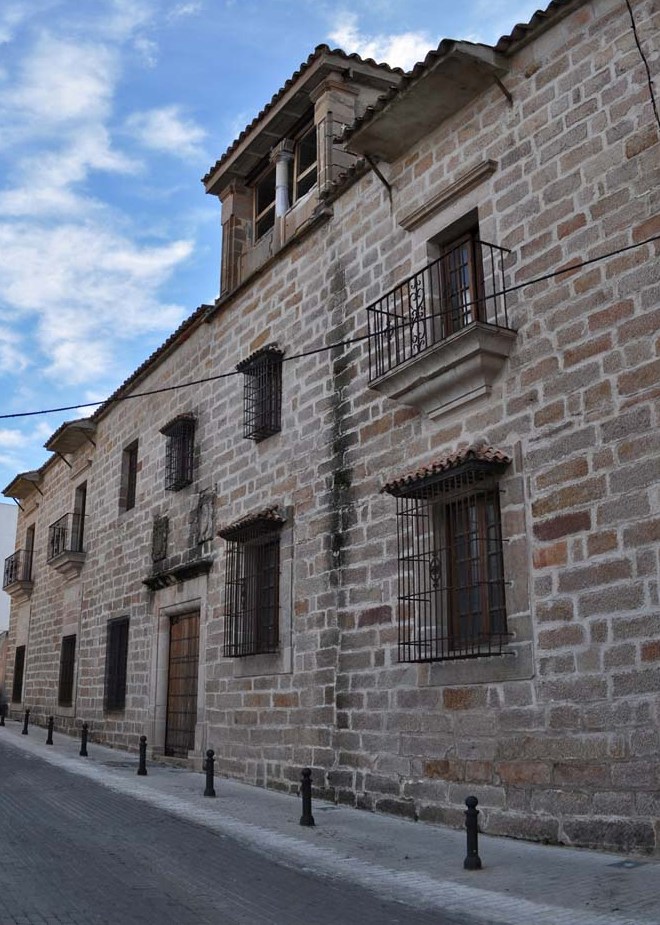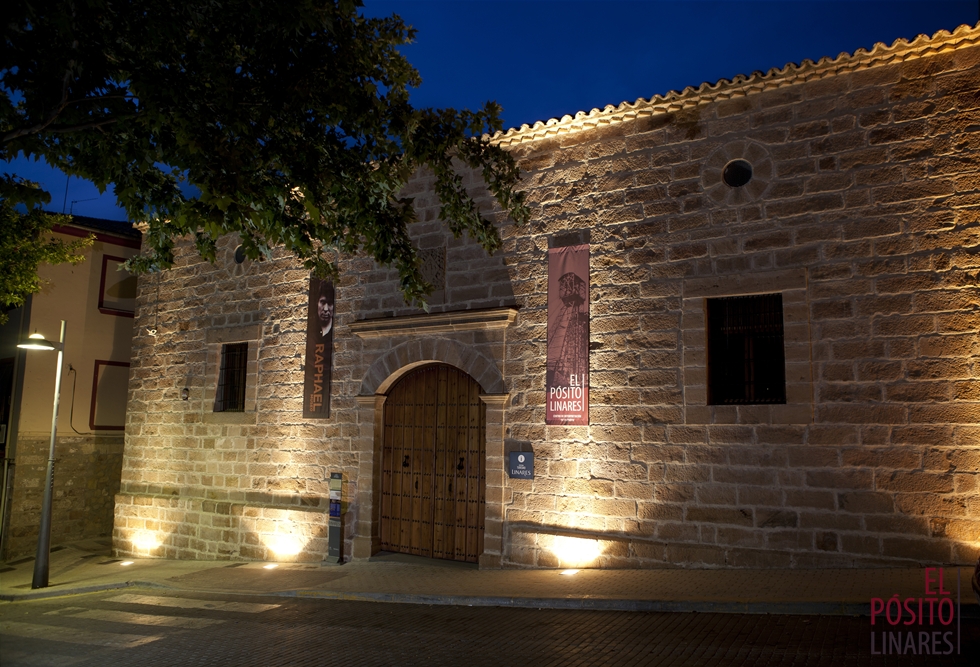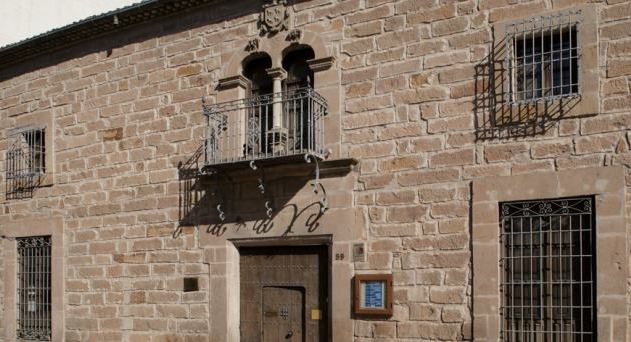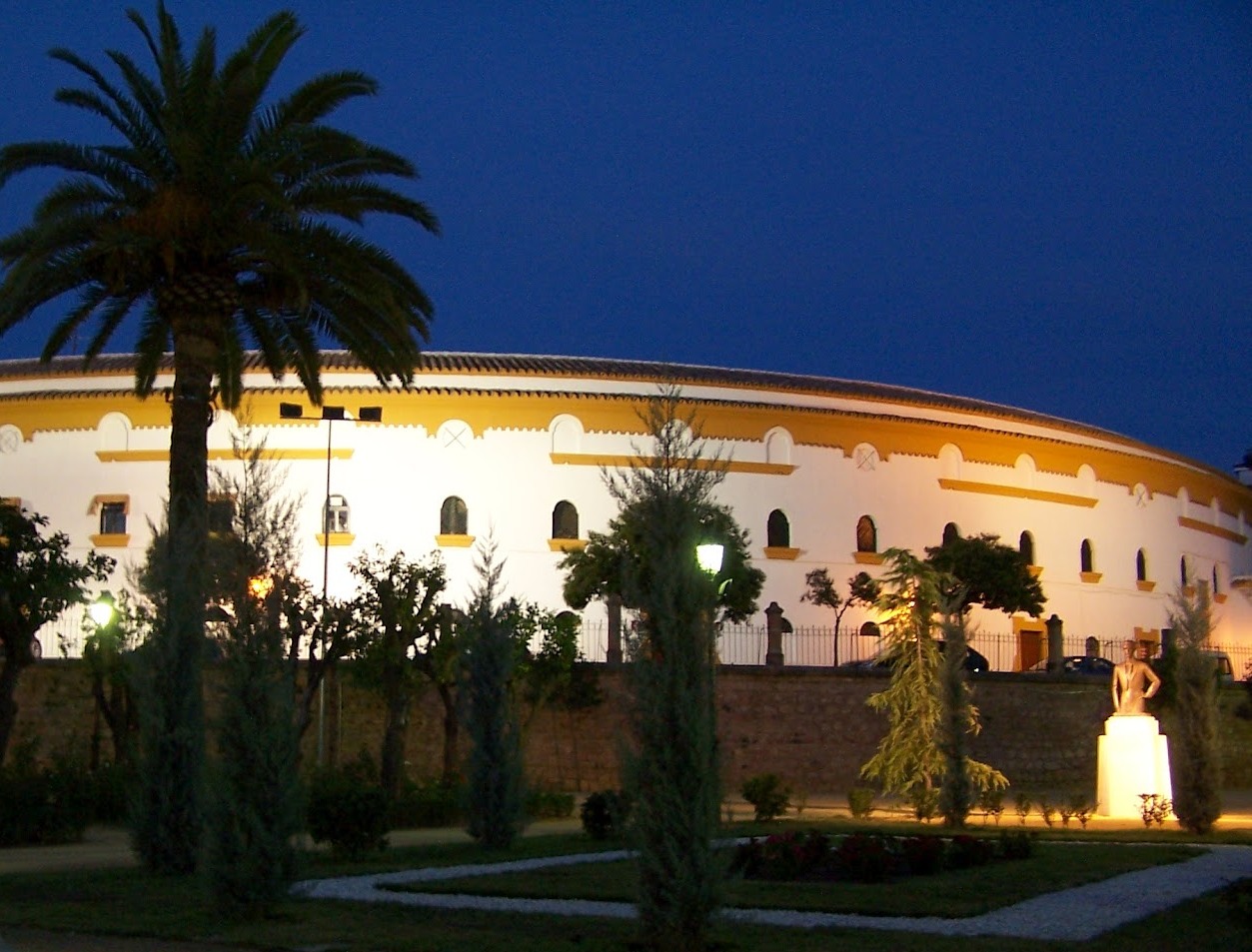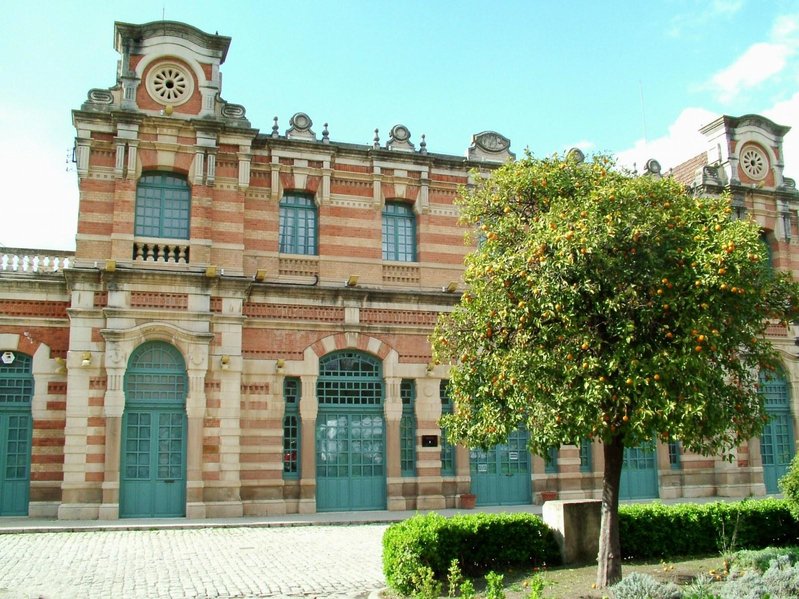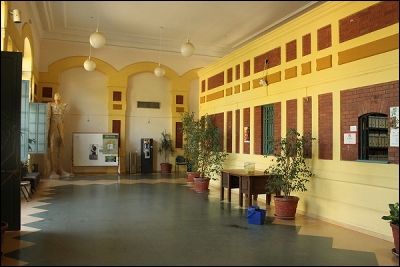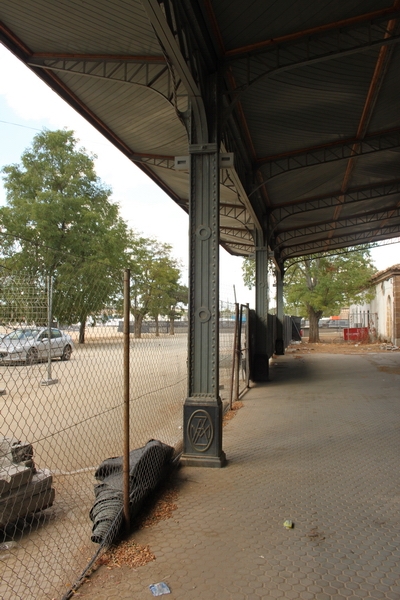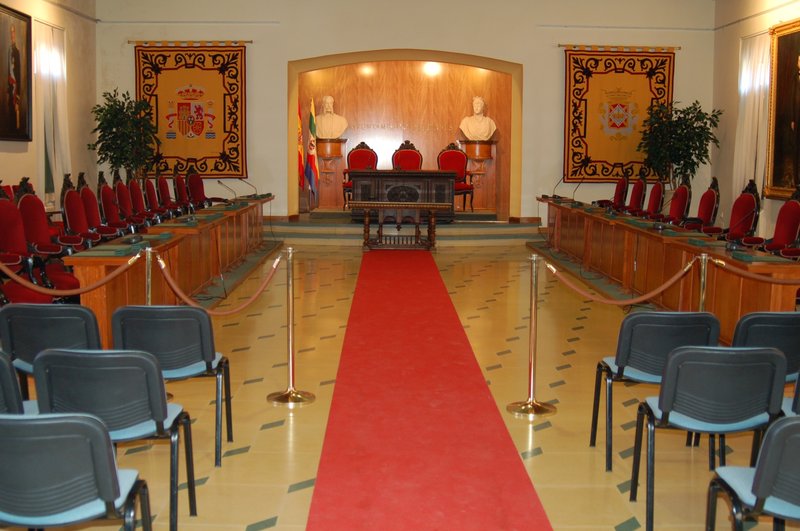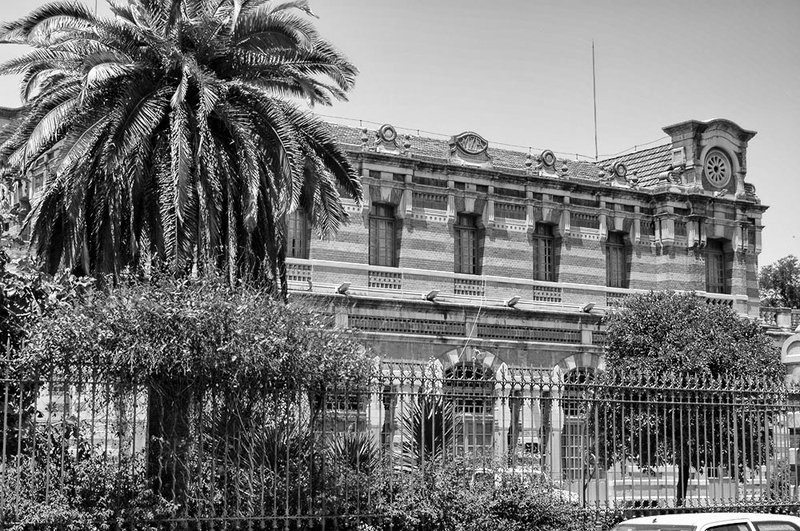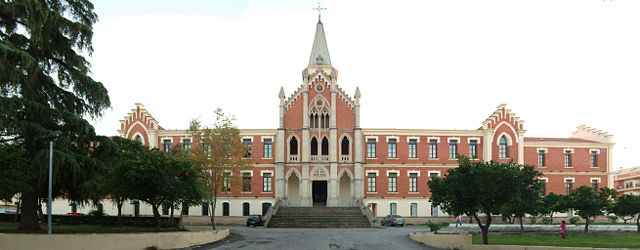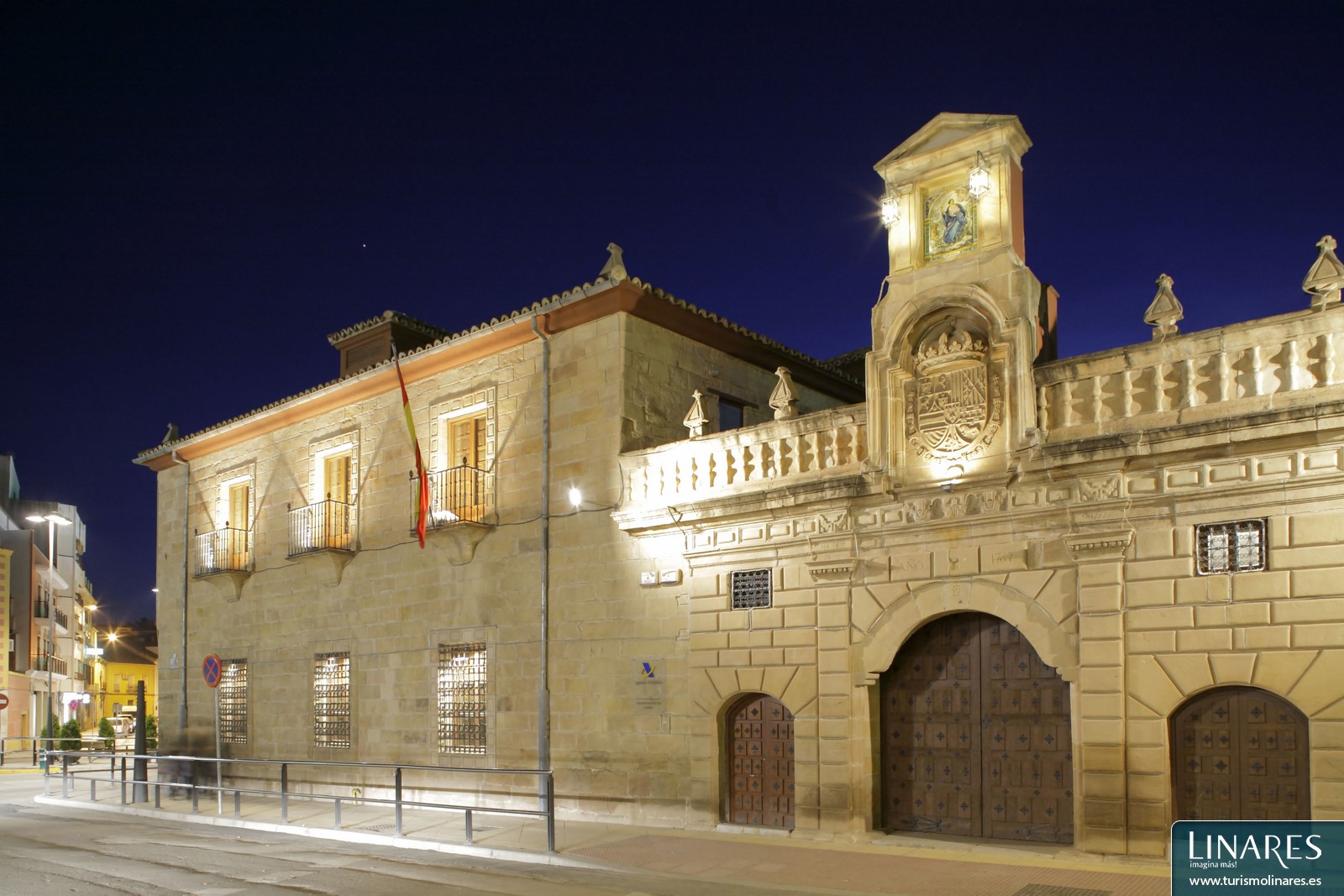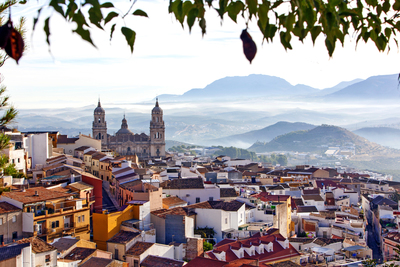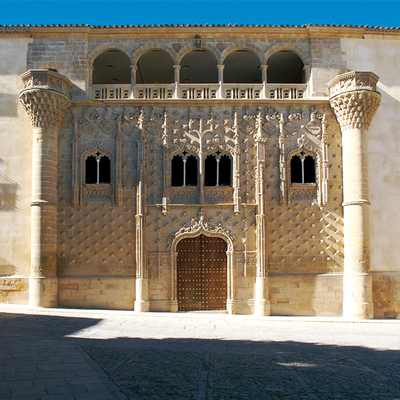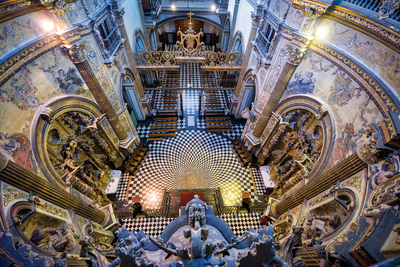Estación de Madrid
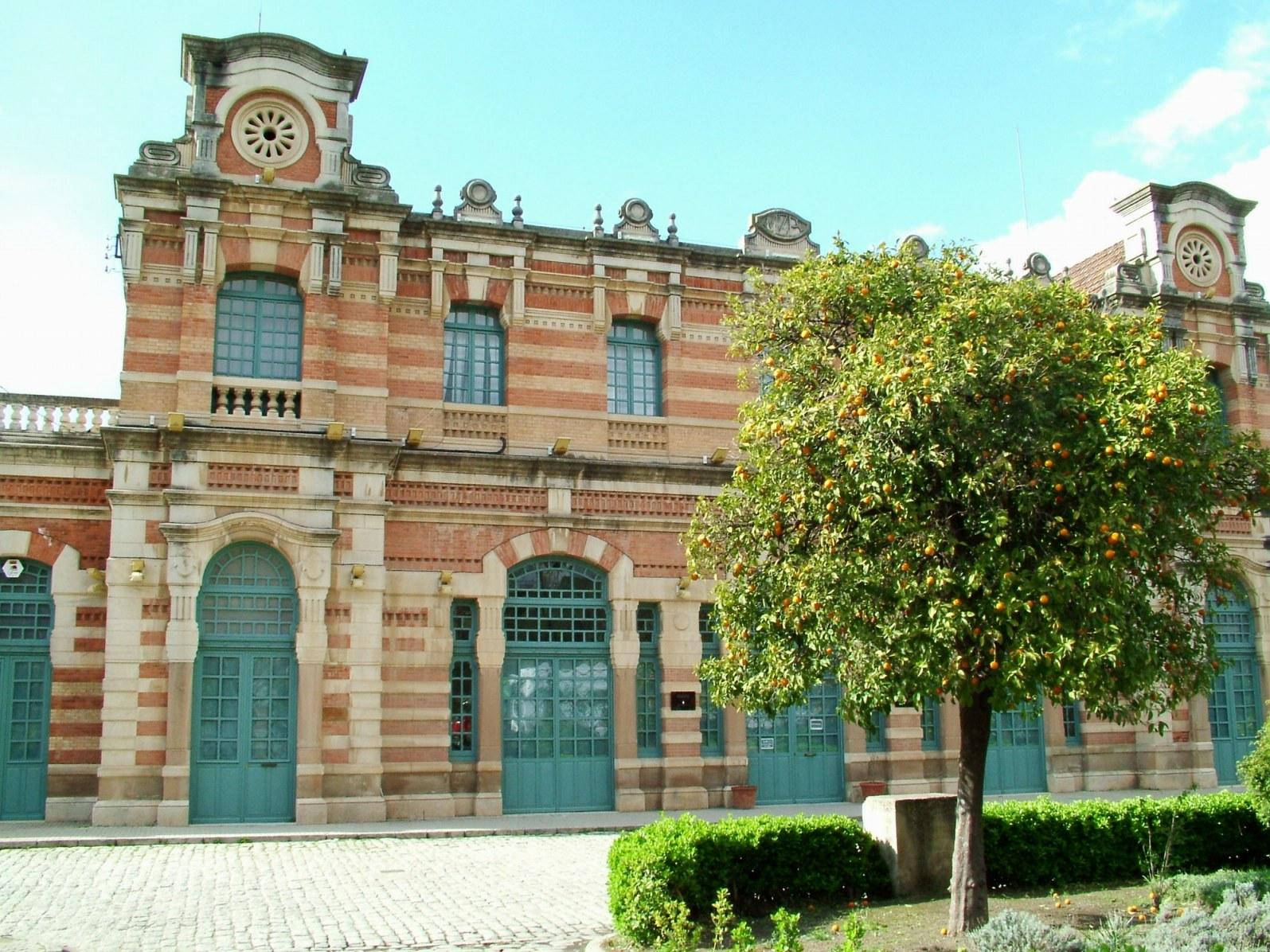
The "Estación de Linarejos", known in Linares as the “Estación de Madrid”, is located along the Paseo de Linarejos. It was built by the MZA Company (Madrid, Zaragoza and Alicante) and is preserved today as in its best moments. The first rails appeared in 1874, although trains didn't begin to arrive until 1877-1879. The impressive building of today, the second for passengers in this venue, was designed by Don Clavería Narciso Palacios in 1915.
The Estación de Madrid is in the eclectic style prevailing at this time and combines Neomudéjar and Modernist features. The horizontal design of the building simulates the form of an inverted carriage, highlighted by four operculums (two at the front and two at the rear) like the spoked wheels of a railway vehicle. It is built of two tone bricks, in horizontal lines, combined with stone. The main façade, the entry from the Paseo, is decorated with gardens enclosed with metal railings; at the rear you will see the typical iron roof canopy over the platform. Nowadays this building houses the Council Hall of the Excmo. Ayuntamiento de Linares.
The canteen was in an adjacent one-storey building to the right at the rear of the main building. Of the remaining buildings, there are two of interest: one of the station's large loading platforms, which has been converted into a Mining Landscape Visitor Centre and another small building, aesthetically similar to the main one originally housing the public toilets, which was refurbished to become the Town Hall's area of consumption office.
Today you can explore some of these old railway lines, restored as the rail trails, which remind us of the important industrial and mining past of Linares.
“Linares is not Linares, it's a second Madrid. Who hasn't seen the train passing through Linares?” This famous popular saying was not in vain, Linares was the major railway gateway to Andalusia, it came to have as many as 7 stations of which only one remains in service, At the end of the 19th and beginning of the 20th centuries, three broad-gauge railway companies became established in Linares: MZA (Madrid, Zaragoza and Alicante), Andaluces and Caminos de Hierro del Sur de España; and a fourth with narrow-gauge (La Carolina y Prolongaciones) The Iberian gauge MZA arched around the north of the municipal district of Linares, reaching a number of mines. The two lines, that of Vadollano (located 9 km further down on the Madrid line) and that of Los Salidos (through the mining district), met at the station, in the form of a "Y", and on that great esplanade, nowadays a venue for fairs, the trains were loaded with lead for transport to the ports. The Linares-Vadollano line closed in 1985, although services continued until 1987.
Services and infrastructure
Target audiences
Segments
Specialties
Open to visitors
You may be interested
